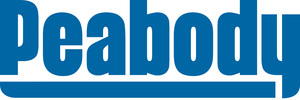ST. LOUIS, Oct. 2, 2017 /PRNewswire/ -- Peabody today confirmed that a number of highly qualified potential investors have expressed interest in pursuing an ownership position in the Navajo Generating Station for operation beyond 2019, meeting a major milestone for identifying a new ownership structure.
The ownership transition process, led by Lazard Fréres & Co. LLC, remains on track with the transition timeframe outlined by plant majority owner and operating agent Salt River Project, which has agreed to help facilitate an ownership transition subject to negotiation of definitive agreements.
"The Navajo Nation is committed to engaging in negotiations as this important process continues," said Navajo Nation President Russell Begaye. "The Nation is encouraged by the expressed interest of potential owners as the process moves forward."
"We are pleased with the robust response to the plant's ownership transition process to date," said George Bilicic, Lazard Vice Chairman and Global Head of Power, Energy & Infrastructure who is leading the process. "In the next phase, we will continue an intense focus to develop a new ownership structure, working toward a final selection of investors and negotiating definitive agreements by the end of the first quarter of 2018."
"Lazard believes the Navajo Generating Station is a critical resource in the region for power generation and resource diversity, and from a total regional economic impact perspective. Lazard took on this project because we believe there will be an optimal path forward that solves the needs of the many stakeholders involved, including the Navajo, Hopi and ratepayers in Arizona," Bilicic said.
Development of the Navajo Generating Station was authorized by Congress and serves as a stable, affordable power source to move water across the state for the Central Arizona Project. The plant was sited on tribal lands, using Navajo and Hopi energy resources to create tribal jobs and revenues, helping the government fulfill its trust responsibility. It was commissioned to run 75 years through 2044.
The plant historically has been among the most efficient coal plants in the Southwest and is consistently among the highest dispatching coal plants in the region, except for a brief period in 2016 when natural gas prices hit a historic low. Natural gas prices have since rebounded back to higher levels.
Regional power prices have surged to an average of 90 percent above 2016 levels, according to Platts. The Navajo Generating Station recently has been running at about an 80 percent capacity factor and is competing cost-effectively to add reliability and resilience to the electric grid.
"The recent spike in Southwest power prices caused by high demand periods and higher natural gas costs demonstrates why the Navajo Generating Station and coal continue to be an essential component of a reliable, resilient and cost-effective energy portfolio for Arizona," said Kemal Williamson, Peabody President – Americas. "We will continue our efforts to make the plant among the lowest cost, most competitive baseload power plants in the region."
Fueled by Peabody's Kayenta Mine, the Navajo Generating Station began operating in 1974. The mine and the power plant support 825 jobs and provide approximately 85 percent of the Hopi Tribe's annual general fund budget and 22 percent of the Navajo Nation's annual general budget. Virtually all of the mine's hourly workforce is Native American, and last year the mine contributed $430 million in direct and indirect economic benefits into regional economies.
"The Hopi have offered our land and energy resources to fuel the Navajo Generating Station for more than four decades," said Hopi Tribal Chairman Herman Honanie. "We've used our energy resources to provide for Hopi people, and we are proud that the benefit of our energy is spread far beyond Hopi Mesas. It is important to keep the plant operating for the tribes and the entire state, and we'll continue to be part of this effort."
U.S. consumers benefit from a reliable, resilient energy portfolio that uses a diversity of fuels. A broad energy portfolio, including coal, has the benefit of lowering the cost of U.S. electricity by as much as $114 billion annually and lowers the average retail price of electricity by 27 percent, according to a recent IHS Markit study.
Peabody is the world's largest private-sector coal company. The company is also a leading voice in advocating for sustainable mining, energy access and clean coal technologies. Peabody serves metallurgical and thermal coal customers in more than 25 countries on five continents. For further information, visit PeabodyEnergy.com.
Media Contact:
Beth Sutton
928 221 6792
SOURCE Peabody
WANT YOUR COMPANY'S NEWS FEATURED ON PRNEWSWIRE.COM?
Newsrooms &
Influencers
Digital Media
Outlets
Journalists
Opted In





Share this article